The owner of Native Earth Teaching Farm in Chilmark is the author of the new book, Weedy Wisdom.
Rebecca Gilbert remembers living through Hurricane Bob in 1991 and says it was a wakeup call for her. In the aftermath of what was declared a national emergency in the state, water flooded Island streets and our major roads were blocked by a tangle of branches, poles, and 2,400 downed power lines. Electricity was out in some places for seven to ten days. Power at Cronig’s supermarket was out for six days. Gilbert wonders about living in a future with climate changes where potentially much worse is predicted for us.
“I get scared and nervous and worried, then I look around for what we can do,” says the 67-year-old owner of Native Earth Teaching Farm in Chilmark.
To Gilbert, those answers are right around us — plants, common wild plants in our backyards she often refers to as weeds. In times of need, those plants can offer first aid, food, and inspiration. It’s the subject of her new book out this month — Weedy Wisdom for the Curious Forager: Common Plants to Nourish Your Body + Soul (on Amazon) — and of an eye-opening talk she gave during Climate Week this past spring.
If medical help is delayed or scarce, knowing about plantain or yarrow, for example, could be “very helpful, even lifesaving,” says Gilbert. Both plants have a reputation for stopping bleeding and preventing infections from taking hold. “You don’t have to be an herbalist to know these things. If you just know those two plants, you have the first line of defense.”
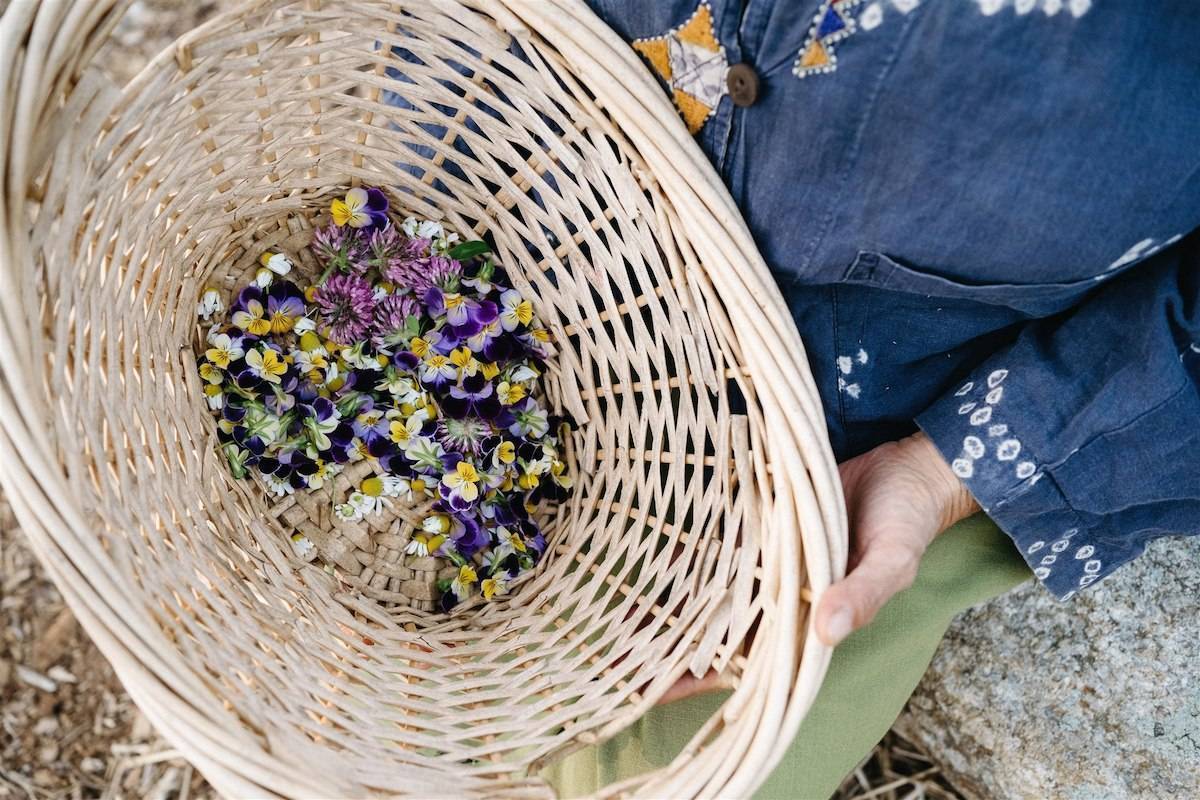
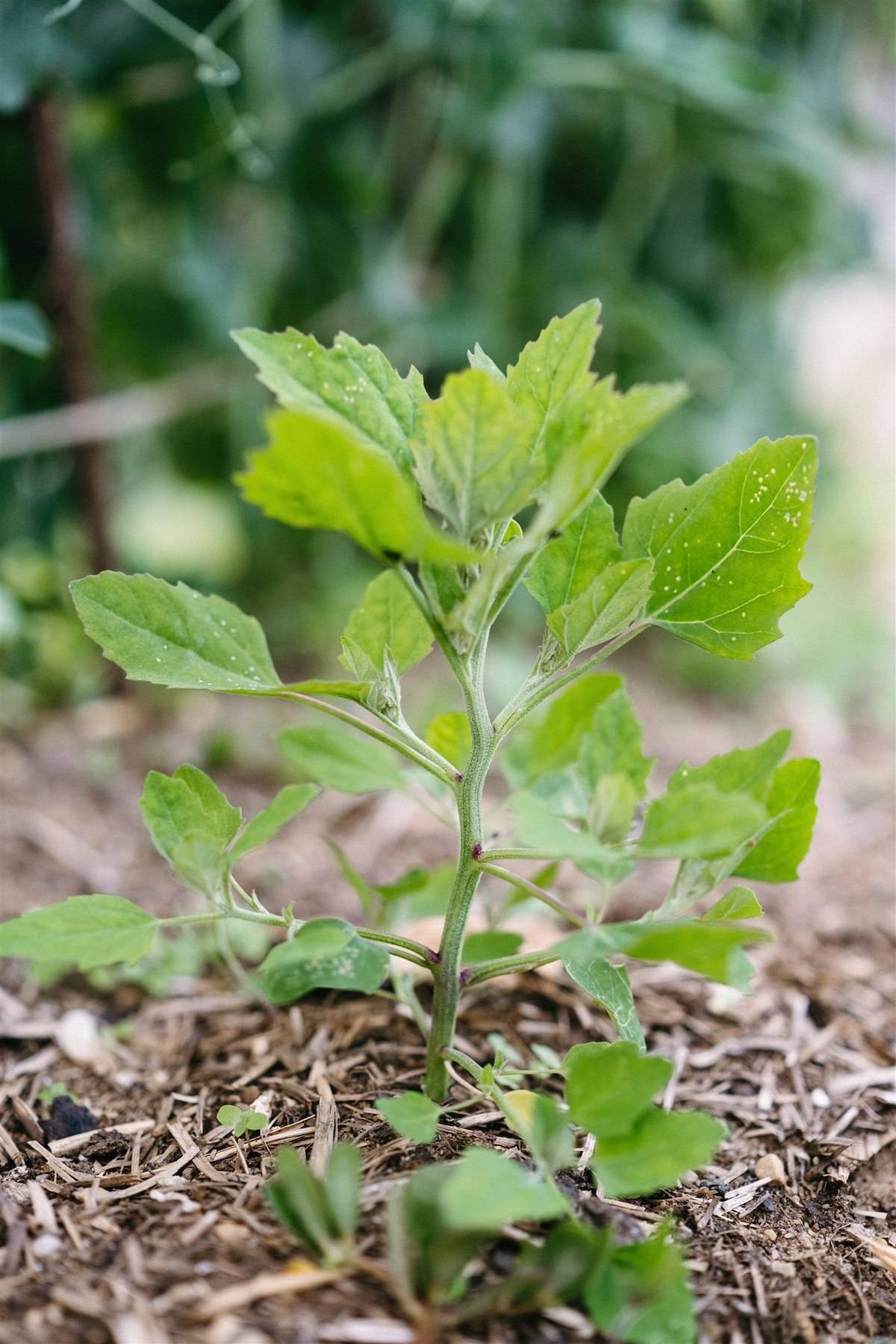
Gilbert learned about plantain as “the Band-Aid plant,” as her grandmother called it, during the first summer she stayed on the Island with her grandparents at age six. Her grandparents, homesteaders, were raising a few farm animals and growing their own food on 30 acres they had purchased on North Road during the Depression. That year, with her grandmother’s encouragement, she also learned to identify sassafras, wintergreen, and mint. Gilbert spent the next 60 years watching and studying the plants — cultivated and wild — at the farm.
“I’m a big believer in getting to know a plant for a while before you really start using it in a lot of ways,” she says. “If you follow it through a life cycle and watch it go through its changes, you’re going to know it well enough to feel comfortable using it.”
You should also look around at your neighbors, Gilbert suggests. Who has a generator, who may have a stocked pantry, who has saved seeds? Who can help us in times of disasters and who might need our help, such as seniors or those who are homebound? Knowing these things ahead of time, including gaining an understanding of plants, could help us.
Just as importantly in these times ahead, she believes, weeds can offer inspiration and guidance.
“A weed is a plant with a good survival strategy,” she says. “They are there for us when we need them.”
“Plants are way older than us. Plants have already oxygenated the world to get ready for us.” In other words, says Gilbert, “plants have adapted already. They know how to do that better than us.”
Humans often tend to act as if we are separate from nature, she points out, but “we are nature” not man versus nature, a stance that has led to “pollution, exploitation, and the disruptions of the natural systems of balance.” Like us, says Gilbert, weeds are interwoven with their ecosystem and cannot survive alone.
“I’ve observed them evolving and adapting. Diversity is how you move forward when things change. We are much safer to have as much diversity as possible. Who knows what we’ll need, what we’ll have to adapt to next.”
Gilbert’s message has been echoed by others who say our monoculture-based food system — with only a handful of varieties of say bananas, avocados, coffee, and other foods — leaves the system vulnerable to climate breakdown when a single pathogen or drought can wipe out an entire crop. Mass producing just a few varieties, wiping out thousands of years of diversity, has significantly interfered with crop resistance, scientists and climate experts say. Cultivating and eating a variety of genetically diverse food will protect us from future pests and diseases.
The need for adaptation is a little like the arc of Gilbert’s life. At one point, Rebecca, one of three siblings, overheard her family contemplating selling the farm on Martha’s Vineyard since no-one was living there. Her father, an only child with a childhood of farm chores, had long ago traded Island farm life for city life to work in computer-based medical research. Rebecca decided she would come here to live and save the farm. She was in her twenties, a graduate of Washington State College with interests in boat building, silversmithing, and writing, but also struggling with depression and thoughts of suicide.
“I was a mess when I came here,” she says. “I did not have a lot of self-respect.” She said she wasn’t exactly sure why she was even at the farm.
Eating fresh food from the farm, managing the chores and animals, and being outside, and getting daily exercise all helped and healed her, she says. “The farm, basically in various ways, is what really made a difference for me. I didn’t realize how many bad habits I was in. I kind of like mentioning the dark times because I am so happy and confident now.”
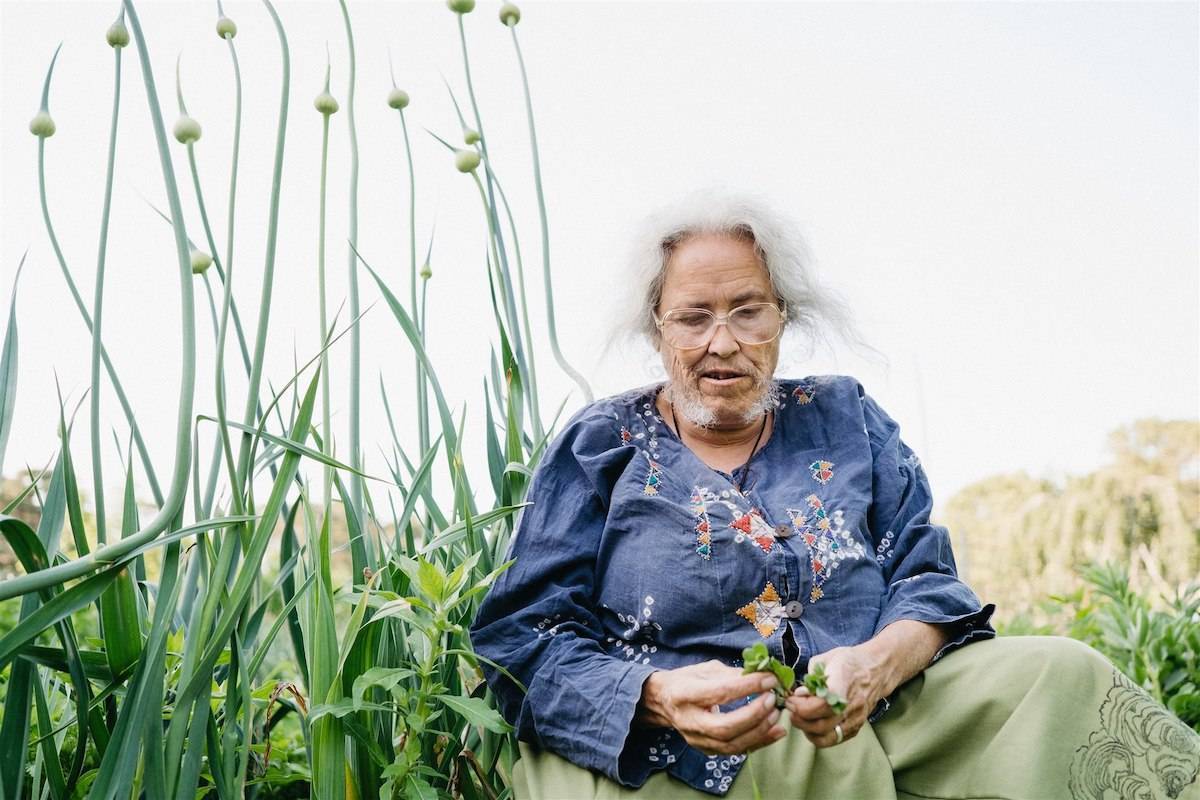
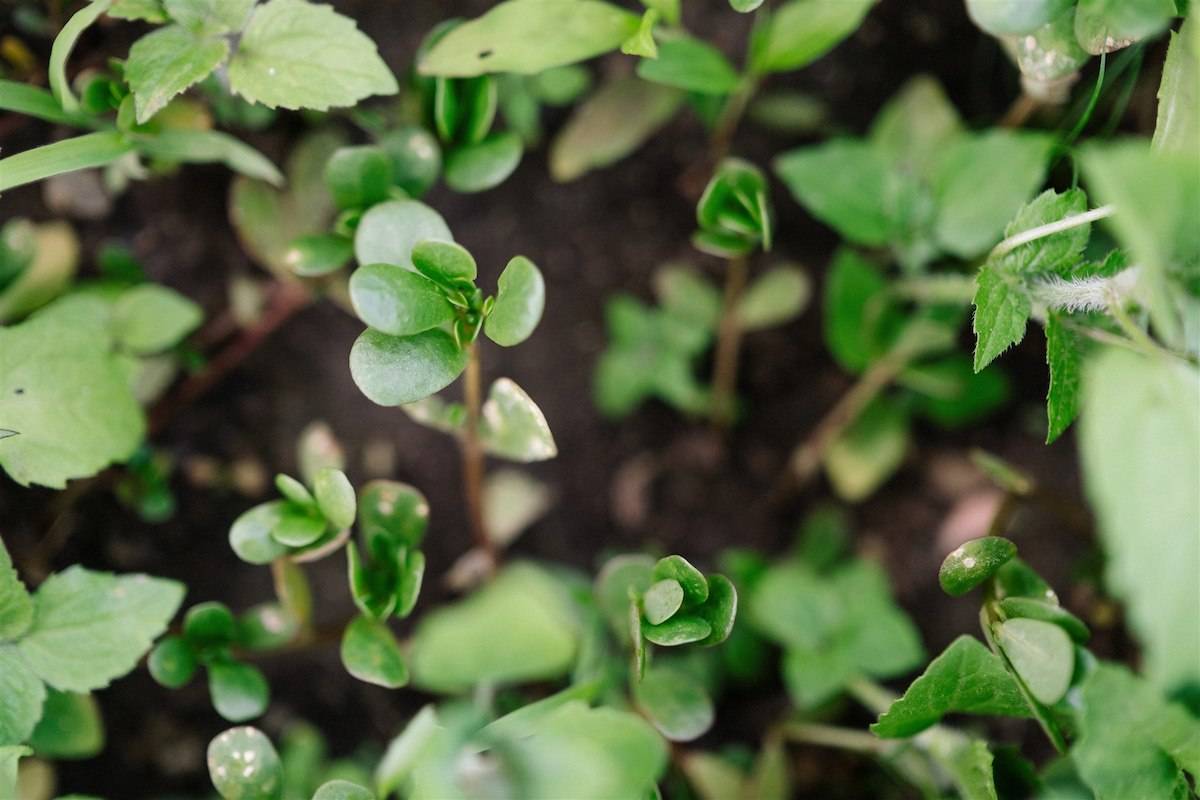
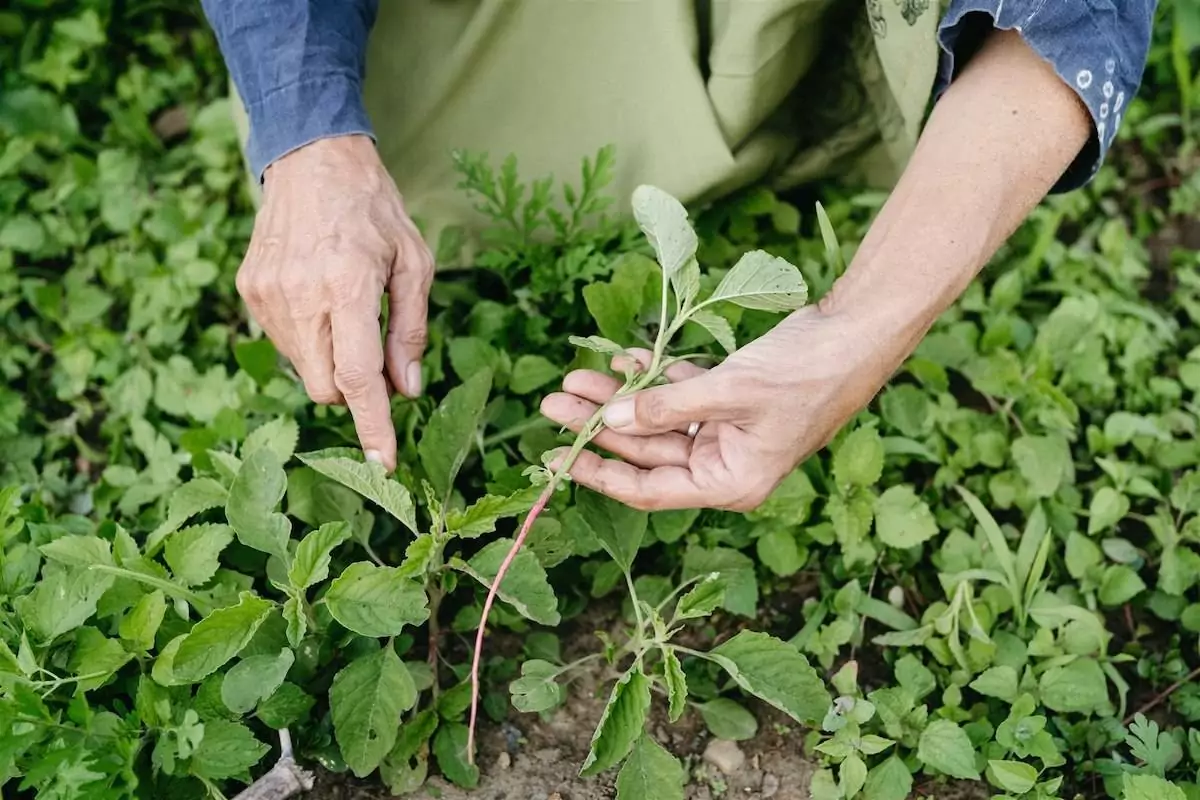
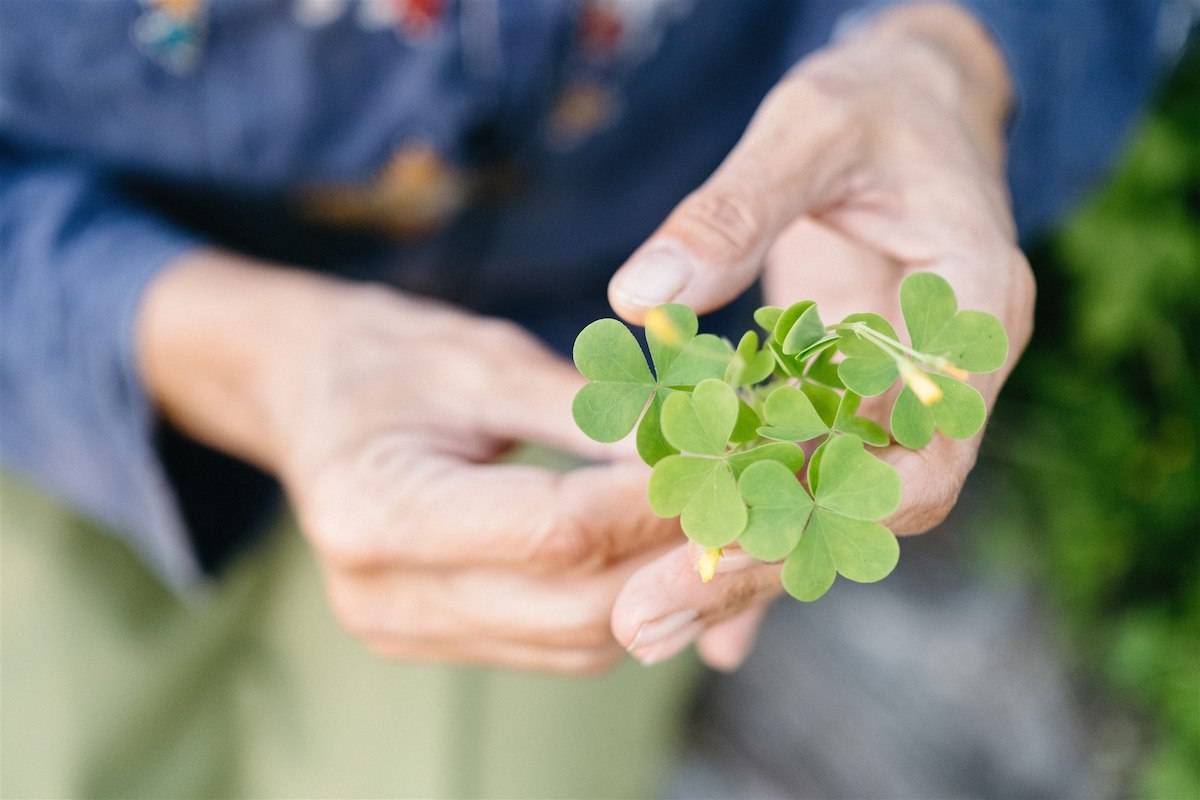
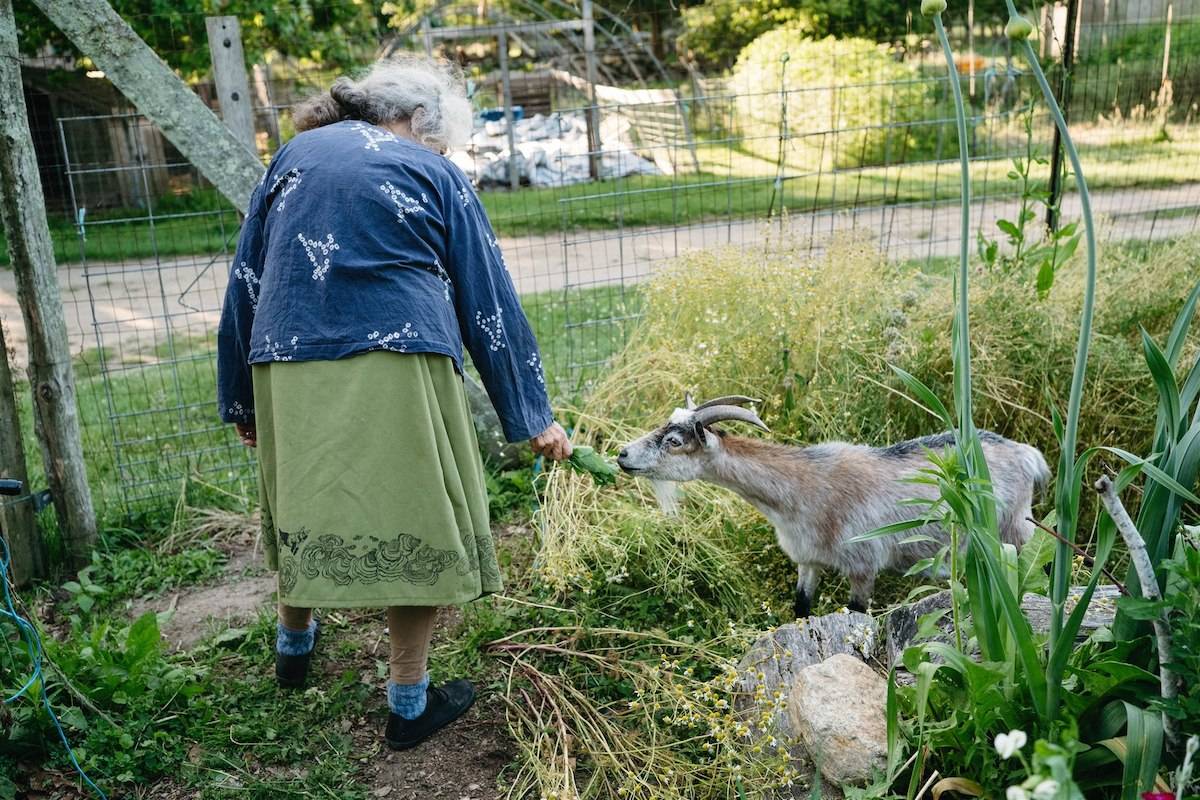
The Wisdom of Weeds
Often, the very plants you may need have a way of showing up around you, Gilbert writes about in Weedy Wisdom. “Turn to your elders, the weeds, when you need help and healing. Ask them directly for their assistance. The depth of their wisdom and generosity never fails to amaze me.”
When Gilbert got Lyme disease some years back and was bedridden, she had no energy to prepare meals or keep up her garden, which was filled with weeds. So she ate the weeds. “They were there, so dense with flavor and nutrition. They nourished me deeply.”
She continued to strengthen her relationship with plants, and officially opened Native Earth Teaching Farm to the public in 2002. Along with tours for school children to see farm animals and farm life, Native Earth offers community gardening, classes in fiber arts and natural dyes, goat yoga, and is home to a new cultural center in partnership with Island musician and drummer Rick Bausman. Now that the book is out, Gilbert has been lecturing around the Island about the power of plants, and offering weed walks and classes at the farm.
A weed is a plant with a good survival strategy. They are there for us when we need them.
Her new book, written during Covid, is based on a series of classes at the farm with Camp Jabberwocky. Campers with disabilities spent eight weeks learning to recognize plants, learning about edible flowers, using roots and seeds, working with fermentation, cooking techniques, and healing first aid plants. These lessons are now chapters in the book.
“The focus is on how to appreciate them, how to approach learning from and about plants, and how to deepen the connections that already exist,” says Gilbert. “The learning part can be fun.”
Gilbert herself often picks a basket of wild greens, such as chickweed and mustard, much like Europeans and many Indigenous peoples did for hundreds of years. “Sometimes I pick the vegetables and sometimes I pick the weeds,” she says. “Medieval salads included more than a hundred herbs, flowers, and vegetable leaves, as well as greens like lettuce and mustard still in use today.” Some of the weeds and invasives (see “What’s So Bad About Invasives”) she writes about found their way to the colonies with European settlers, some with seeds in hay, others brought as medicine, Rebecca discovered in her research.
The day I visited, Rebecca had picked a pile of lamb’s quarters, a mild leafy wild green in the spinach family. She planned to cook lamb’s quarters down and combine them with potatoes for dinner. As we walked around the farm, we walked by a high-bush blueberry grove more than 100 years old, another fenced area with 12 pawpaw trees and her mother’s orange mint patch. Weeds grow here and there, especially in and around various vegetable gardens. But not all weeds are allowed to take over, she notes. “Just because it’s a weed we eat doesn’t mean it gets free reign.”
Try Bunch of Grapes for Weedy Wisdom, or try Amazon here.

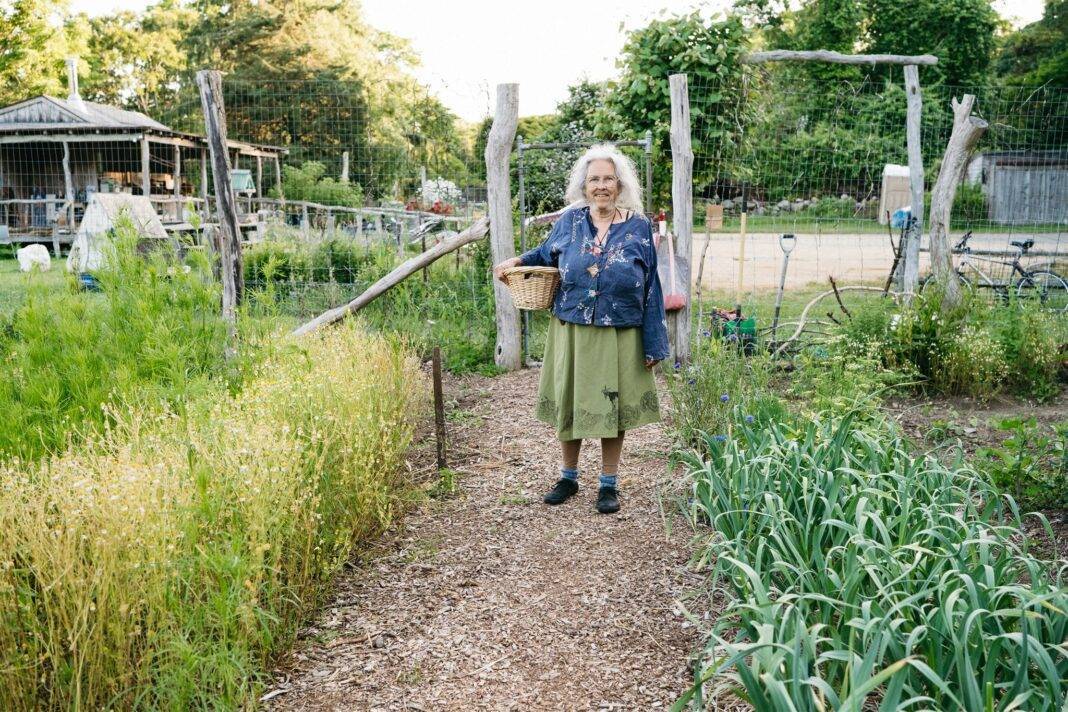
Thank you so much. I have spent time as a teenager and young adult learning about plants and which ones to use, it’s time to resume my ways as a mature adult to my youth and follow your sage wisdom. This was a timely and well taken message from the spiritual realms and plant kingdom to get my act together.
Loved your article. Would be fun to visit your farm and learn more
She is living my dream!
So inspiring.
Love to read her story, where could one buy her book?